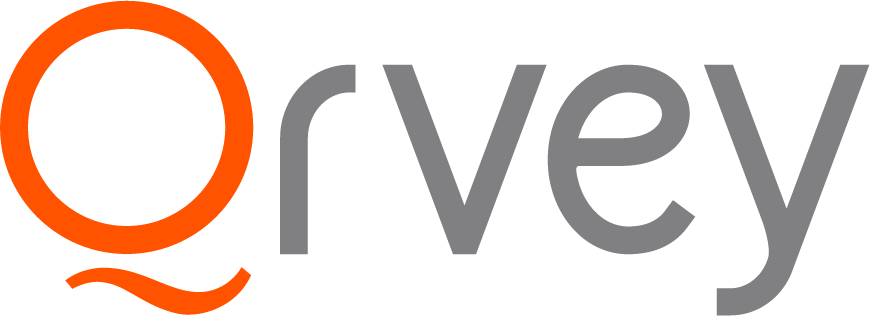In today’s cloud-driven world, FinOps has become a crucial practice for organizations of all sizes. As businesses increasingly rely on cloud services, managing and optimizing cloud costs has become a top priority.
It offers a set of best practices and tools to help organizations get the most value from their cloud investments. But the action is only as good as the reporting.
This is where self-service analytics tools come in. When FinOps platforms offer custom dashboarding, the value to end-users exponentially increases.

What is FinOps?
FinOps, short for Financial Operations, is a cultural practice that brings financial accountability to the variable spending model of the cloud. According to FinOps.org, it’s about helping engineering, finance, and business teams make informed decisions on cloud spending.
FinOps enables organizations to get maximum business value by helping engineering, finance, technology, and business teams collaborate on cloud financial management.
Key Aspects of FinOps
There are several key practices:
- Visibility and allocation of cloud costs
- Optimization of cloud resources and reducing costs
- Continuous improvement and operational excellence
These practices help enable teams to align their cloud usage with business objectives and financial goals.

Examples of FinOps Use Cases
Here are some common use cases for cloud cost management and resource allocation:
Cloud Cost Management
Cloud cost management tools help organizations track and analyze their cloud spending across multiple providers. This visibility allows teams to identify cost anomalies and optimize their cloud infrastructure.
Resource Allocation Optimization
By analyzing usage patterns, companies can ensure they’re using cloud environments efficiently. This includes right-sizing instances, removing unused resources, and leveraging reserved instances or savings plans.
Budget Forecasting
It provides advanced forecasting capabilities, helping organizations predict future cloud costs. This enables better budgeting and financial planning for cloud investments.

Benefits of FinOps Software to Large Enterprises
Large enterprises can gain significant advantages by adopting cost-efficiency practices and tools. Here are some key benefits:
Cost Control and Transparency
Departments get a clear view of cloud spending across the organization. This transparency helps identify areas for cloud cost optimization and promotes accountability.
Efficient Cloud Resource Usage
By implementing FinOps frameworks, enterprises can ensure they’re using cloud resources efficiently. This leads to reduced waste and improved ROI on cloud investments.
Improved Financial Accountability
FinOps fosters a culture of financial responsibility across teams. It helps align technology decisions with business objectives and financial goals. Ultimately, it’s about saving money on their cloud bill as cloud computing costs have risen in recent years.

Future of the FinOps Industry
The FinOps industry is ready for significant growth in the coming years. Several factors contribute to this trend:
Growth in Cloud Adoption
As more organizations move to the cloud, the need for effective cloud financial management grows. This drives demand for FinOps solutions and expertise.
Increasing Demand for Skills
The rise of FinOps has created a new career path for IT and finance professionals. Organizations are increasingly seeking individuals with skills to manage their cloud costs effectively.
Certifications: FinOps.org and Azure
To meet the growing demand for FinOps expertise, organizations like FinOps.org and Microsoft Azure Finops offer certifications. These FinOps certifications help professionals validate their skills in cloud financial management.

Examples of FinOps Tools and Solutions
Several companies have emerged as leaders in the software space. Forrester analyst Tracy Woo has been covering the space more closely over the last year. Her research has shown that the FinOps function is growing in importance at the executive level.
In fact, Forrester puts out a Wave report for Cloud Cost Management and Optimization. Flexera, a leader in the space, offers the report for free on its website here.
The solutions include products from companies such as:
- Flexera
- NetApp
- Nuantix
- IBM
- and several other solution providers.


Importance of Self-Service Dashboard Building in FinOps Platforms
Self-service dashboard building is becoming an essential feature in modern SaaS platforms. Here’s why it matters:
User Empowerment and Autonomy
Self-service dashboards allow users to create and customize their own custom dashboards. This empowers teams to access the specific data they need without relying on IT or data teams.
Real-Time Insights and Analytics
With self-service dashboards, users can quickly create dashboards to analyze real-time data. This enables faster decision-making and more agile cloud management.
Customization to Specific Business Needs
Every organization has unique requirements. Self-service dashboard building allows teams to tailor their analytics to their specific business needs and KPIs.

How Qrvey’s Embedded Analytics Can Power These Features
Embedded analytics tools like Qrvey can significantly enhance FinOps platforms by enabling self-service dashboard building. Here’s how:
Seamless Integration with FinOps Platforms
Existing SaaS platforms can seamlessly integrate Qrvey’s embedded analytics solution. This allows users to create and customize dashboards without leaving their familiar environments.
Qrvey’s native data lake is ready for high-volume, enterprise-scale reporting needs. What sets it apart is that it’s ready for multi-tenant environments with a built-in semantic layer.
Every company wants to see their data in their own light. Embedded, white-label analytics solutions power such features.
Enhanced Data Visualization
Qrvey offers a wide range of visualization options, enabling users to create compelling and informative dashboards. This helps teams better understand and communicate cloud spending patterns.
With self-service analytics, this offers the freedom for users to create their own views.
Data-Driven Automation
Qrvey also includes a no-code workflow automation builder that is embeddable into SaaS platforms. This offers the next level of analytics. Being able to set alerts is the tip of the iceberg. Qrvey’s automation builder can perform advanced actions such as database lookups, writebacks and integrations with third-party systems.
Competitive Advantages for FinOps Platforms
By incorporating embedded analytics, FinOps platforms can differentiate themselves in a crowded market. Self-service dashboard building becomes a powerful selling point for organizations seeking flexible and user-friendly FinOps solutions. Also, check out our guide to success with our top 3 self-service analytics mistakes.
As the industry continues to grow, the importance of self-service dashboard building in FinOps platforms cannot be overstated. FinOps platforms can use tools like Qrvey to give users detailed information on cloud spending and resource usage.
As cloud adoption accelerates, the need for effective cloud financial management grows. FinOps tools that offer self-service analytics capabilities will be well-positioned to meet the evolving needs of businesses. To go a step further, self-service analytics offers competitive advantages to SaaS platforms adopting this technology.
Want to see for yourself?
Check out our additional resources to see if it’s right for you:

Natan brings over 20 years of experience helping product teams deliver high-performing embedded analytics experiences to their customers. Prior to Qrvey, he led the Client Technical Services and Support organizations at Logi Analytics, where he guided companies through complex analytics integrations. Today, Natan partners closely with Qrvey customers to evolve their analytics roadmaps, identifying enhancements that unlock new value and drive revenue growth.
Popular Posts
Why is Multi-Tenant Analytics So Hard?
BLOG
Creating performant, secure, and scalable multi-tenant analytics requires overcoming steep engineering challenges that stretch the limits of...
How We Define Embedded Analytics
BLOG
Embedded analytics comes in many forms, but at Qrvey we focus exclusively on embedded analytics for SaaS applications. Discover the differences here...
White Labeling Your Analytics for Success
BLOG
When using third party analytics software you want it to blend in seamlessly to your application. Learn more on how and why this is important for user experience.





